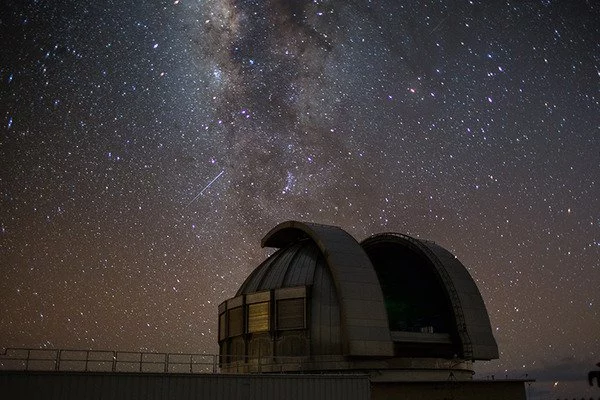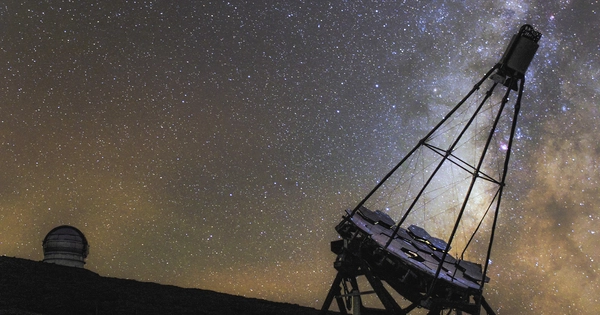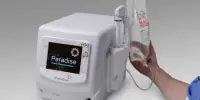Researchers describe an analysis method that could improve telescope performance at the Simons Observatory by evaluating it before installation. This is the first time a telescope’s optical performance has been confirmed prior to deployment.
The Simons Observatory in Northern Chile is building some of the largest and most sophisticated telescopes ever built. They are intended to measure the cosmic microwave background – electromagnetic radiation left over from the universe’s formation – with unprecedented sensitivity. Researchers detail an analysis method in a new study that could improve these telescopes by evaluating their performance before installation.
“We developed a method to use radio-holography to characterize a fully integrated cryogenic telescope instrument prior to deployment,” said Grace Chesmore of the University of Chicago. “It’s much easier to spot issues before they become problematic in the lab and manipulate the components inside the telescope to optimize performance.”
We developed a method to use radio-holography to characterize a fully integrated cryogenic telescope instrument prior to deployment. It’s much easier to spot issues before they become problematic in the lab and manipulate the components inside the telescope to optimize performance.
Grace Chesmore
Although it is common to wait until after installation to characterize a telescope’s optical performance, it is difficult to make adjustments once everything is in place. However, a full analysis is typically not possible prior to installation because lab-based techniques are designed for room temperature analysis, whereas telescope components are kept at cryogenic temperatures to improve sensitivity.
Researchers led by Jeff McMahon of the University of Chicago describe how they applied their new measurement approach to the Simons Observatory Large Aperture Telescope receiver optics, which includes lenses, filters, baffles, and other components, in the Optica Publishing Group journal Applied Optics. This is the first time such parameters have been confirmed in the lab prior to the deployment of a new receiver.
“The Simons Observatory will create unprecedented maps of the afterglow of the Big Bang, providing an understanding of the first moments and inner workings of our universe,” said Chesmore, the paper’s first author. “The observatory will aid in the creation of these ultra-sensitive cosmic microwave background maps.”

Looking back in time
The cosmic microwave background maps that will be produced by the Simons Observatory will provide a window into our universe at a time so early in its history that tiny signals from quantum gravity could be detectable, says Chesmore. However, probing space with such sensitivity requires a better understanding of how electromagnetic radiation travels through the telescope’s optical system and the elimination of as much scattering as possible.
The researchers employed a technique known as near-field radio holography in their new work, which can be used to reconstruct how electromagnetic radiation travels through a system such as a telescope. They installed a detector that can map a very bright coherent source while operating at the extremely cold temperature of 4 Kelvin to do this at cryogenic temperatures. This enabled them to generate maps with extremely high signal-to-noise ratios, which they used to ensure that Large Aperture Telescope receiver optics performed as expected.
“All objects, including lenses, shrink and change optical properties when they cool down,” Chesmore explained. “We were able to measure the optics in the shapes they will be when observed in Chile by operating the holography detector at 4 Kelvin.”
From lab to space observations
Following the completion of these measurements, the researchers created software to predict how the telescope would perform with photons from space rather than the near-field source used in the laboratory.
“The software uses the near-field maps that we measured to predict the behavior of a far-field microwave source,” Chesmore explained. “This is only possible with radio-holography because it measures both the amplitude and phase of the microwaves, and there is a known relationship between the near- and far-field properties.”
The researchers discovered that the telescope’s optics matched predictions using their new approach. They were also able to identify and mitigate a scattering source prior to the telescope’s deployment.
The optical system they described for the Large Aperture Telescope is now on its way to Chile for installation. The Simons Observatory will house the Large Aperture Telescope as well as three Small Aperture Telescopes, which will be used in tandem to observe the cosmic microwave background in great detail. The University of Chicago researchers plan to continue characterizing components for the Simons Observatory telescopes and say they are excited to use these telescopes to learn more about our Universe.
















